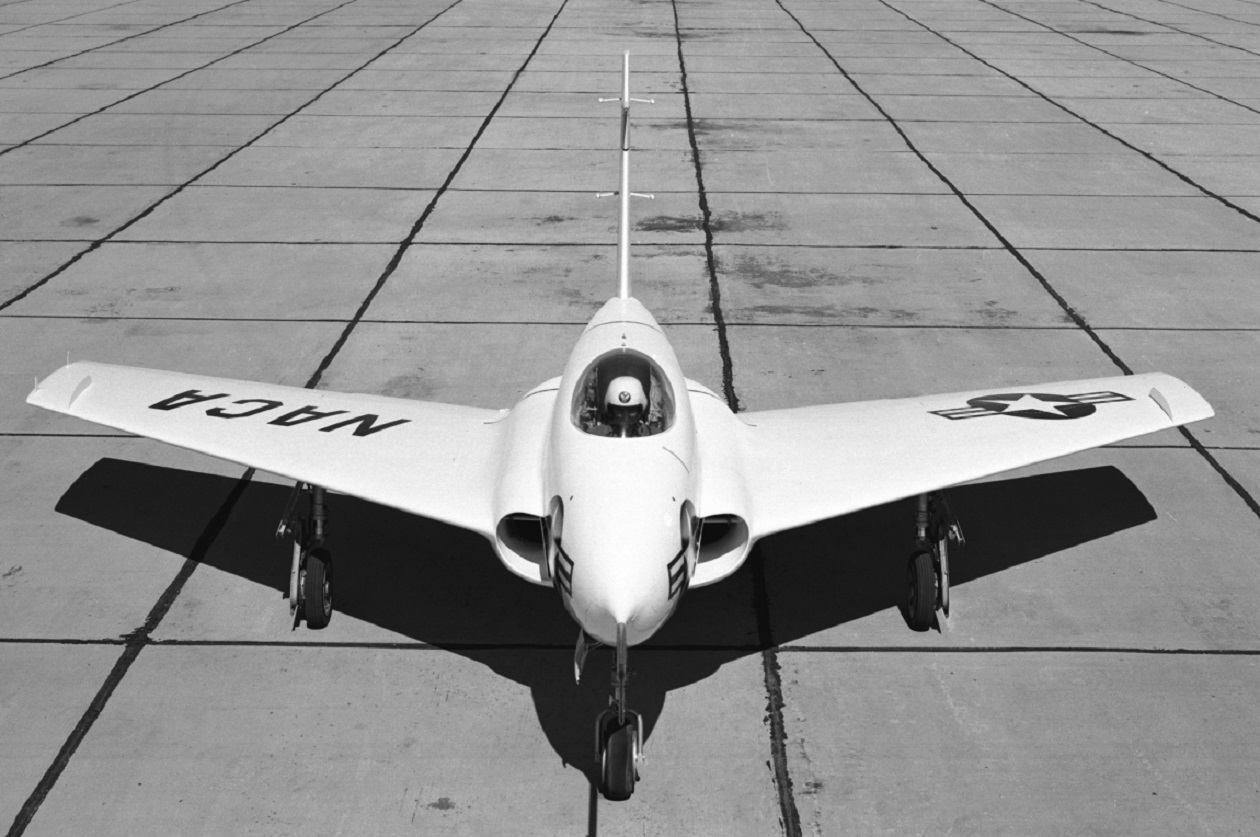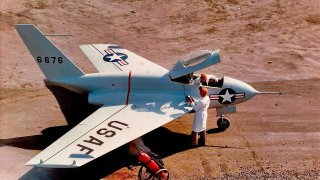X-4 Bantam: A Short-Lived X-Plane That Changed Everything
Alas, the first X-4 was grounded after a mere 10 flights. It was unreliable, so much so that NACA Muroc flight test unit head Walt Williams called the aircraft a lemon.
Meet the X-4 Bantam: In the publishing world, Bantam Books is a wildly successful imprint. Of significance for Bantam in the 1980s was the autobiography of the legendary Brig. Gen. Chuck Yeager, best known for being the first man to break the sound barrier, which he did in the Bell X-1. Indeed, Yeager flew his fair share of experimental X-planes, including the X-15 rocket plane, and the subject of this article: the X-4 Bantam.
X-4 Bantam: Inspirations, Origins, and Specifications
Unlike her avian namesake, the X-4 Bantam could fly high, far, and fast. She actually drew her inspiration from a former WWII nemesis, namely Nazi Germany’s Messerschmitt Me 163 Komet, which was the first fighter powered by rocket alone to ever enter operational service.
As noted by the U.S. Air Force’s official Fact Sheet on the X-4, “During World War II, engineers in the U.S. and UK studied semi-tailless aircraft, and the German Luftwaffe fielded the semi-tailless Me 163 (one of which is on display in the museum’s World War II Gallery). After the war ended, Northrop built two X-4s to test if this configuration could perform at transonic (near-supersonic) speeds better than conventional aircraft.”
The Bantam was built by the Northrop Corporation, now known as Northrop Grumman, on behalf of the National Advisory Committee on Aeronautics, the predecessor to NASA. She made her maiden flight on Dec. 16, 1948, launching from Muroc Air Force Base, California, and helmed by Northrop test pilot Charles Tucker.
Specifications for the Bantam included a fuselage length of 23 feet 3 inches, a wingspan of 26 feet 10 inches, a height of 14 feet 10 inches, an empty weight of 5,507 pounds, and a max takeoff weight of 7,820 lbs. Two Westinghouse XJ30 turbojet engines powered the plane through the skies at a maximum airspeed of 640 miles per hour (Mach-0.83) and a maximum endurance of 44 minutes. A total of two airframes were built.
The Bantam had no horizontal tail surfaces, relying instead on combined elevator and aileron control surfaces (elevons) for control in pitch & roll attitudes. Some aerospace engineers thought eliminating the horizontal tail would do away with stability problems at high speeds that resulted from the interaction of supersonic shock waves between the wings and the horizontal stabilizers. These shock waves were thought to cause stability problems at transonic speeds up to Mach-0.9.
Tested by Yeager and His Peers
Alas, the first X-4 was grounded after a mere 10 flights. It was unreliable, so much so that NACA Muroc flight test unit head Walt Williams called the aircraft a lemon.
Luckily the second bird proved far more reliable, making 20 contractor flights before both planes were turned over to the U.S. Air Force and NACA. From that point onward, the first Bantam was relegated to the status of spare parts bin for her sister airframe. Between August and September 1950, that second Bantam was put through her paces by some of the biggest names ever to grace the annals of Cold War-era test piloting: Chuck Yeager, Pete Everest, Al Boyd, Richard Johnson, Fred Ascani, Arthur Murray and Jack Ridley.
But the Bantam kept running a fowl, er, afoul of stability issues. It experienced pitch oscillation that was likened to driving on a washboard road, as well as a tucking phenomenon in which the nose pitched down. She made her final NACA flight on Sept. 29, 1953. Ultimately, as a NASA Fact Sheet edited by Yvonne Gibbs concludes, “The X-4’s primary importance involved proving a negative, in that a swept-wing semi-tailless design was not suitable for speeds near Mach-1. Aircraft designers were thus able to avoid this dead end.”
X-4 Legacy and Where Are They Now?
Swept-wing semi-tailless designs for aircraft finally did become feasible thanks to the development of computerized fly-by-wire systems. This can be seen in the X-36, the F-117A Nighthawk, and the YF-118G Bird of Prey.

Luckily for us aviation history buffs, both X-4s have been preserved for posterity. S/N 46-676, is on display at the Flight Test Museum on the grounds of Edwards AFB, California, while 6677 is displayed at the National Museum of the United States Air Force on the grounds of Wright-Patterson AFB in the vicinity of Dayton, Ohio. The latter was restored by the Western Museum of Flight in Torrance, California, and transferred to the “Wright-Pat” in 1953.
About the Author
Christian D. Orr is a former Air Force Security Forces officer, Federal law enforcement officer, and private military contractor (with assignments worked in Iraq, the United Arab Emirates, Kosovo, Japan, Germany, and the Pentagon). Chris holds a B.A. in International Relations from the University of Southern California (USC) and an M.A. in Intelligence Studies (concentration in Terrorism Studies) from American Military University (AMU). He has also been published in The Daily Torch and The Journal of Intelligence and Cyber Security. Last but not least, he is a Companion of the Order of the Naval Order of the United States (NOUS).


